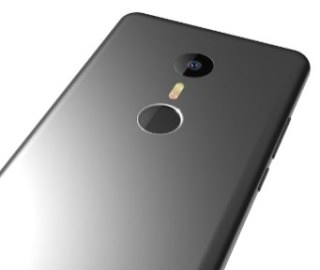NEXT Biometrics Group ASA announced the introduction of ultra-thin fingerprint sensor designs that remove the need for large bezels, or metallic frames, used in the first generation of NEXT sensors, making them tailored for the design-focused smartphone, tablet and notebook markets.
 NEXT Biometrics fingerprint sensor Smartphone design creating a round-looking sensor.
NEXT Biometrics fingerprint sensor Smartphone design creating a round-looking sensor.
Tore Etholm-Idsoe, CEO of NEXT Biometrics, the leader in high-quality low-cost fingerprint sensors, said, "We expect the new ultra-thin fingerprint sensors to assist us significantly to expand NEXT's share of the smartphone, tablet and notebook market for fingerprint sensors."
NEXT said, "The new ultra-thin fingerprint sensor design breakthrough comes with several important advantages. It allows ultra-thin NEXT fingerprint sensors to be built into smartphones, tablets and notebooks using highly attractive and competitive industrial designs. Removing the bezel enables industrial designers at NEXT customer companies to determine the size and shape of sensors simply by the designs of the opening in the smartphone back covers or notebook palm rests."
The company added that the new sensor designs further enhance the NEXT esd-robustness (electrostatic discharges) to levels compliant with the most rigorous esd-standards, meeting the requirements of all the mass markets relevant for fingerprint sensors.
NEXT noted that the removal of the bezel from its fingerprint sensors also reduces the NEXT sensor cost of materials.
The NEXT CEO said, "Targeting significant market share in the attractive smartphone, tablet and notebook markets, NEXT has been aiming to better meet the requirements of industrial designers. Our NEXT sensors will now be virtually flush with the surroundings, sunken in only by 0.4 to 0.6 mm. This combines great ID with the minimum depth needed for users to feel where to place the finger. Such minimum guidance for uniform finger placement is important for the user experience of any fingerprint system. This is especially true in the context of smartphones, which are used on-the-go."
Etholm-Idsoe said, "NEXT is very pleased with this important breakthrough realized after many months of hard work by our high-quality teams in Seattle and Taipei."